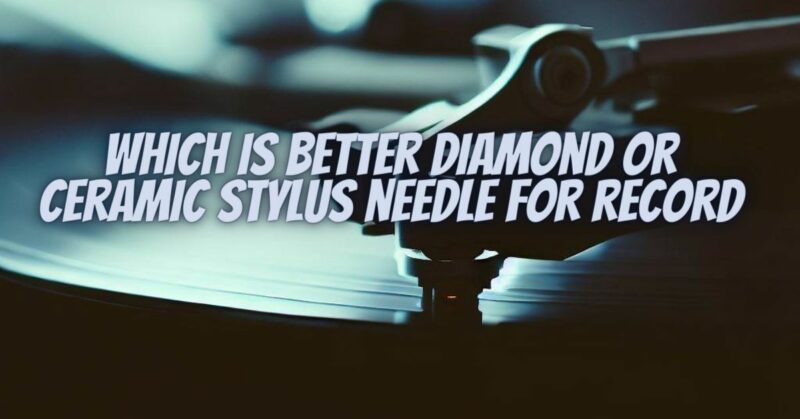When it comes to extracting the rich, analog sound from vinyl records, the choice of needle material is a critical consideration. Two materials often featured in the world of record playback are diamond and ceramic. In this article, we will explore the characteristics of diamond and ceramic needles, highlighting their respective advantages and differences to help you make an informed choice for your vinyl listening experience.
Diamond Needles: A Gem for Precision
Diamond needles have gained a reputation for their precision and performance in record playback. Here are some key characteristics of diamond needles:
- Hardness: Diamond is one of the hardest known materials, second only to another form of carbon, graphene. This hardness ensures that diamond needles can maintain their sharpness and tracking precision over extended periods.
- Tracking Accuracy: The extreme hardness of diamond allows for precise tracking of the intricate grooves on vinyl records. This precision translates to accurate sound reproduction with minimal distortion.
- Minimal Record Wear: Due to their hardness and sharpness, diamond needles exert minimal pressure on the groove walls. This means less wear and tear on your valuable vinyl records, preserving their longevity and sound quality.
- Versatility: Diamond needles come in various shapes, such as conical, elliptical, and microline, catering to a wide range of musical tastes and playback environments. They are known for their versatility and ability to handle different genres and record conditions.
Ceramic Needles: Robust and Resilient
Ceramic needles, while less common than diamond, offer their own set of advantages:
- Robustness: Ceramic needles are robust and durable, capable of withstanding heavy tracking and less-than-ideal record conditions. They are less prone to chipping or breaking compared to diamond.
- Affordability: Ceramic needles are often more budget-friendly than diamond needles. This makes them a practical choice for entry-level turntables and those on a limited budget.
- Sensitivity to Records: Ceramic needles can be less sensitive to minor surface imperfections on records. They can “ride over” small scratches that might cause skipping with more sensitive diamond needles.
Choosing Between Diamond and Ceramic
The choice between a diamond and a ceramic needle depends on your priorities and record collection:
- Diamond Needle: If you prioritize precision tracking, durability, and audiophile-grade sound quality, a diamond needle is often the preferred choice. It excels in reproducing subtle nuances and is suitable for a wide range of musical genres.
- Ceramic Needle: For those seeking affordability, durability, and robust performance, a ceramic needle can be a practical choice, especially for casual listening and entry-level turntables.
It’s important to consider the condition of your records and your budget when making this decision. While diamond needles offer superior sound quality and tracking accuracy, ceramic needles can be a more budget-friendly option for those just starting their vinyl journey.
In the showdown between diamond and ceramic needles for record playback, both materials have their own set of advantages and are suitable for different situations. Whether you prioritize precision and audiophile-quality sound or affordability and durability, your choice should align with your preferences, record collection, and budget. Both types of needles contribute to the joy of vinyl listening, offering distinct benefits to enhance your vinyl playback experience.


